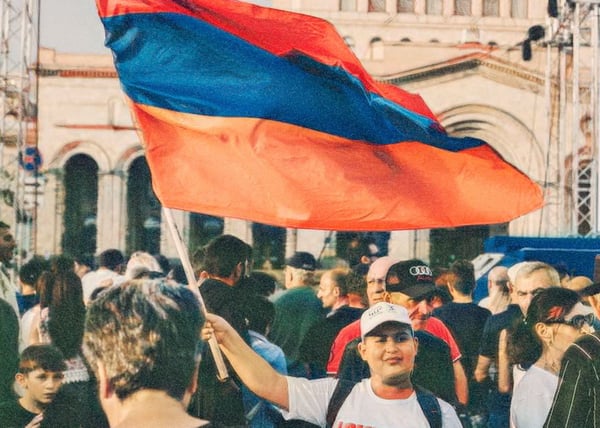How Armenia is becoming the region's only democracy – sort of
In 2018, Armenians pulled off something rare: a peaceful overthrow of a corrupt government. What started as street protests led by ordinary citizens grew into a movement that toppled Serzh Sargsyan's long-standing regime. Since then, the country has taken small but important steps toward democracy.
Elections aren't guaranteed to favour the ruling party, opposition leaders aren't silenced, and media outlets have more freedom than ever before. This might not seem remarkable to the average European, but in a region where autocratic rule has been the norm for decades, Armenia's gradual shift is a noteworthy exception.
In Azerbaijan, elections are largely a formality, and Iran, well, is Iran. In Türkiye, the government regularly throws opposition politicians into prison, along with journalists and protesters. Meanwhile, Georgia, once the democratic leader of the region, has been sliding toward authoritarianism (which you already know if you've been reading us). To illustrate this: Georgia's press freedom ranking fell from 60th to 103rd since 2013, while Armenia's improved from 102nd to 50th in the same period.
Before 2018, Armenia appeared locked into an authoritarian trajectory similar to its neighbours, with Russia influencing every aspect of its economy and politics: Moscow controlled 95% of its foreign trade, all major infrastructure, and even its border security.
The Velvet Revolution didn't just topple a corrupt government; it began unravelling this decades-old dependence. Today, while still formally allied with Russia through the CSTO, Armenia has frozen its participation in the bloc and is actively but carefully pursuing an EU membership application – a geopolitical reorientation unimaginable before 2018.
The largely peaceful 2018 Revolution began because Armenians were fed up with a corrupt regime that had hijacked Armenia's democratic promise while tightening Moscow's grip on the country. It was led by Nikol Pashinyan, who has been prime minister ever since, and was dubbed 'velvet' in reference to the nonviolent 1989 Czechoslovak Velvet Revolution.
Seven years after the revolution's euphoric promise, Armenia's democracy remains a work in progress. Yes, Armenia has seen peaceful power transfers, and opposition parties can now operate more freely. But the country still faces serious challenges.
The judicial system is slow to reform and remains deeply mistrusted. Media outlets, while less restricted, are still influenced by political and business interests. LGBT+ rights remain a thorny issue – queer events are frequently canceled under threats, and hate crimes often go unpunished.
For Armenia's fragile democracy to survive and grow, it needs sustained support – financial, diplomatic, and, given its security challenges, military – especially from the European Union. With authoritarianism tightening its grip across the region, from Azerbaijan's iron-fisted rule to Georgia's democratic backsliding, the threat of Armenia slipping backwards is all too real.

